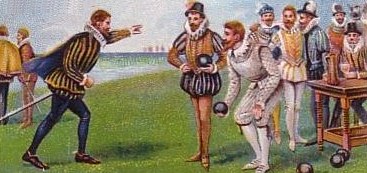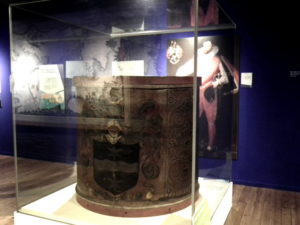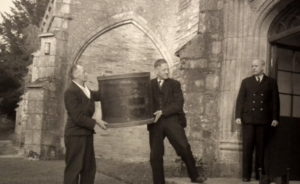-----
Biography of Harrison Tyler Prentiss
Posted to Ancestry.com 26 Apr 2012 by Walter WaggonerBiography of Harrison Tyler “Tip” Prentiss
https://www.ancestry.com/mediaui-viewer/tree/39903005/person/19425250118/media/a8e57691-0876-4112-9271-f9d1cfc24cc2
The Prentiss family moved from Missouri to Quincy, Illinois about the time of his birth, most indicating that it was in 1840 when his father Benjamin and mother Margaret and the Prentiss clan, including his grandfather Henry Leonidas and grandmother Rebecca also made the short trip over the Mississippi River east to a free state. Little is known of Tip’s childhood.
By the time of the census of 1860, Tip was listed as an apprentice steamboat pilot, a profession he followed later in life. A more famous contemporary steamboat pilot was Mark Twain, also of Marion County, Missouri, where the Prentiss family had first settled. However, Samuel Clemons was leaving the profession about the time that Tip was beginning.
With the outbreak of war in 1861, Tip followed his father and enlisted in the Tenth Illinois Infantry Regiment. After his ninety day term was up, he returned home and later enlisted as a drummer in the Fiftieth Illinois Regiment. After his ninety day term was up, he returned home and later enlisted as a drummer in the Fiftieth Illinois Regiment. Tip transferred from the Fiftieth Illinois to the Eighty-fourth Illinois where he also served as a musician. Tip participated in the battles of Ft. Henry, Ft. Donelson, Ft. Pillow, Shiloh, Lookout Mountain and Missionary Ridge.
Tip transferred from the Fiftieth Illinois to the Eighty-fourth Illinois where he also served as a musician. Tip participated in the battles of Ft. Henry, Ft. Donelson, Ft. Pillow, Shiloh, Lookout Mountain and Missionary Ridge.
At the Battle of Shiloh Tip, ran to the rear, as did so many men during the first day of battle. While Tip was running away from the battlefield front, his father was busy trying to hold the line at the Hornet’s Nest against the Confederate onslaught. It was said that as Tip ran for the rear he met up with an aide to his father. According to the story Tip asked, “Where is the old man?” The aide replied that, “He’s out there where you hear all that fighting.” Tip responded saying, “Well, if he is out there one member of the family in the fight is enough, I’m going to the river.” When Tip ran for the safety of the bank of the river, he had plenty of company.
Tip was well liked throughout his life. It was claimed that he was “the best drummer in the Union army” and that he was always mirthful and a jokester.[1] Not all of the children of Ben Prentiss followed him back to Missouri from Quincy, although most did. Sons Tip and Guy were adults and remained in Quincy, although Tip would eventually follow his father to Bethany. Tip had a married daughter who remained in Quincy.
Harrison Tyler Prentiss was a well known river man in Quincy and was a likeable and popular figure in the community. In 1882 Tip and two other men were heroes, when they rescued a drowning woman who had jumped off the bridge into the Mississippi. They prevented her from committing suicide. Tip and his two friends were in a boat and close enough to the woman, so that they were able to row their boat to the spot where she had jumped into the water. They were able to successfully fish her out of the water. Not long afterwards Tip suffered a stroke that was accompanied by paralysis to his right side.
By 1887 Tip Prentiss had gone to live at the newly established Illinois Soldiers and Sailor’s Home in Quincy. From there he left to rejoin the Prentiss family in Bethany where he died on April 21, 1897 at the home of his brother Jacob.[2] Tip preceded his father in death, when Benjamin died February 8, 1901.
[1] History of Northwest Missouri, vol. 3, 1308.
The story of Tip fleeing the battlefield coincides with the disarray of his unit, the Fiftieth Illinois Regiment, on the first day of the battle.
[2] Herald, May 30, 1882.
Whig, April 24, 1897.
------
Found on eBay at https://www.ebay.com/itm/CIVIL-WAR-VETERAN-G-A-R-PRESENTATION-DRUM-ID-D-ILLINOIS-10TH-50TH-84TH-INF/324102295191?hash=item4b76008e97:g:~fgAAOSwXMZea4So
with the following text information (edited):
CIVIL WAR VETERAN G.A.R. PRESENTATION DRUM IDENTIFIED ILLINOIS 10TH, 50TH, 84TH INFANTRY
An excellent post-Civil War drum belonging to Shiloh Union Drummer Boy Harrison Tyler ("Tip") Prentiss who served in the 10th, 50th and 84th Illinois Infantry.
The drum was presented to him by a friend (who was a ship owner) when Prentiss owned a ship that travelled back and forth to New Orleans after the Civil War.
Prentiss belonged to the Missouri G.A.R. Post for several years along the river where he owned his own boat.
The presenter was from the same town and G.A.R. Hall.
Remnants of gold pain are on the drum which probably was used at Town G.A.R. meeting.
There is a very beautiful engraving and complete drum heads with no damage.
Papers are included with the drum, as well as original drum sticks.
Drum is about 7-1/2" tall and 16 inches across.
Very stable and still sounds great to play.
Capt. H.R. Corley of the Mississippi Daily presented the drum to Prentess.
Prentiss served along with his father during the Civil War [who] was a Brigadier General.
prentiss served as the drummer boy at the battle of shiloh
fantastic illinois history and much reading comes with the drum about his rich life
















